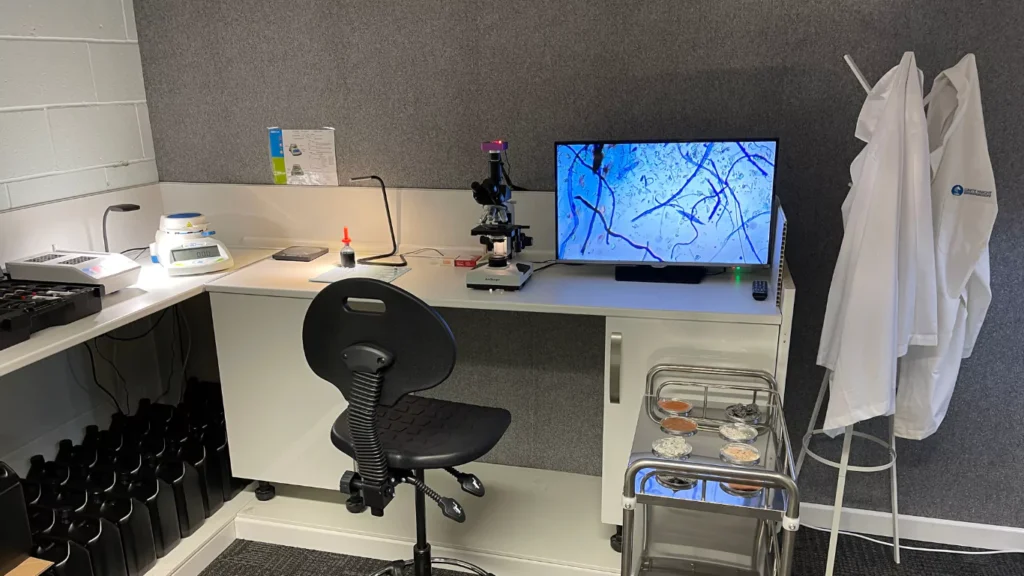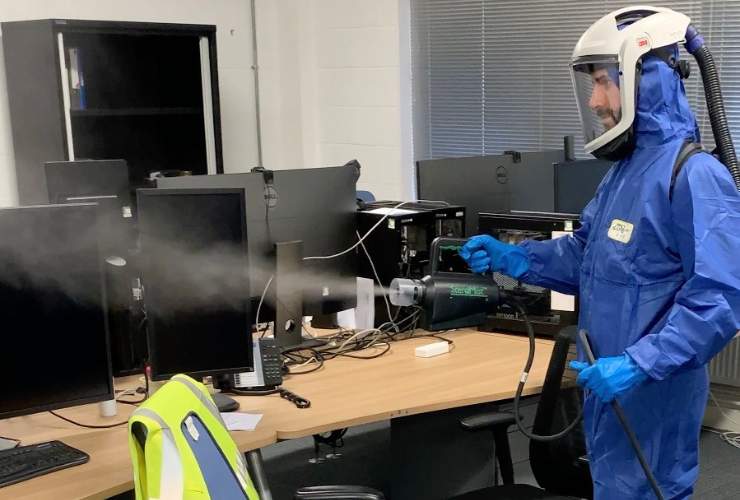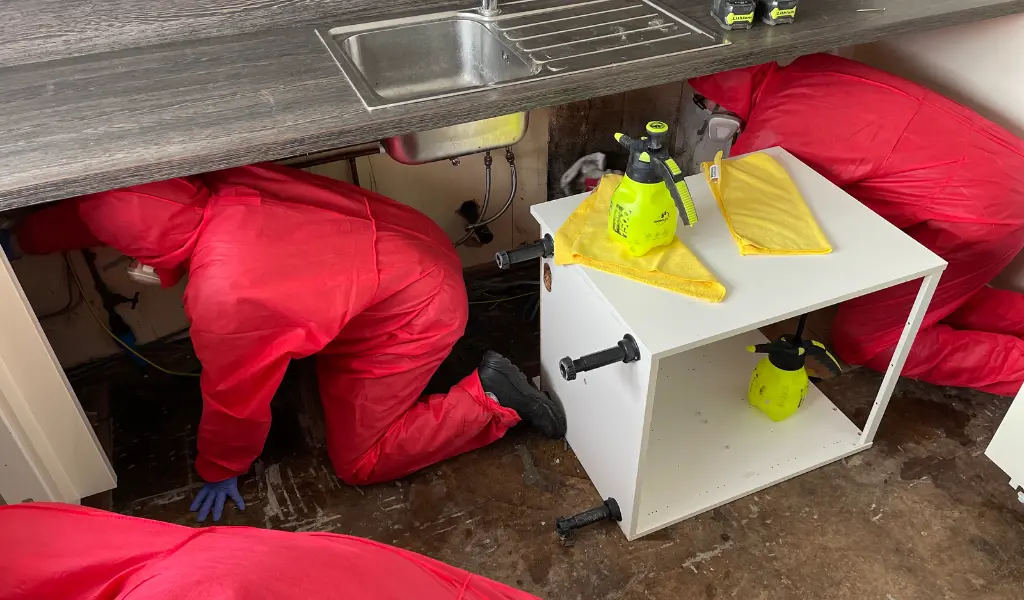Dry Rot
WHITE KNIGHT has been treating Dry Rot infestations for 4 decades with great success. We adopt a very robust action plan that includes the removal and disposal of infected timber and other porous materials.
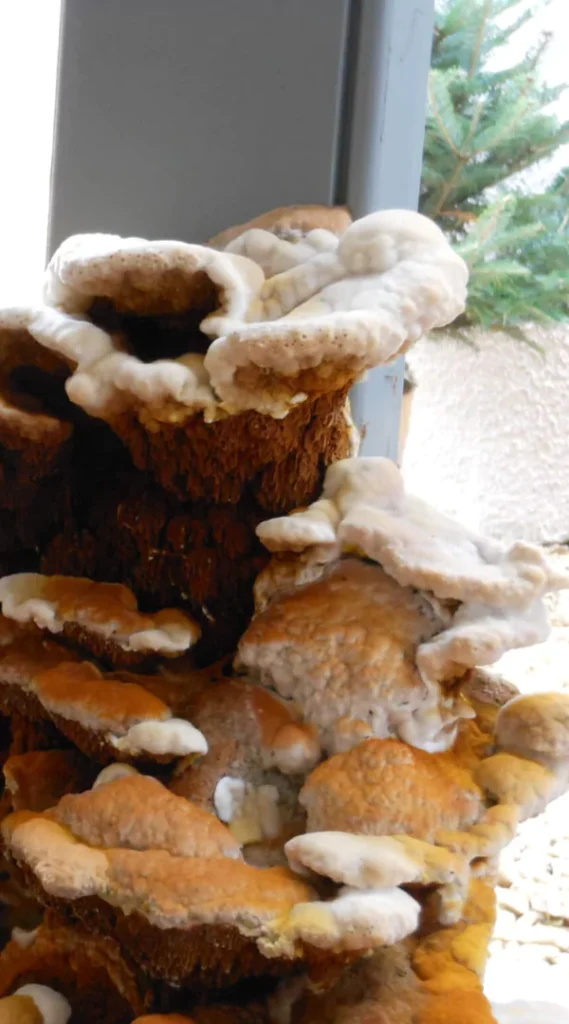
What is Dry Rot?
DRY ROT is a wood destroying fungus and quite different to mould. The infestation can spread with its robust mycelium network, many metres from the original source.
It attacks damp structural timbers, digesting the cellulose and causing cuboidal damage which weakens timber floorboards and joists and can cause flooring systems to collapse.
Dry rot spores typically require moisture content of 30% to germinate and growth typically occurs within 7-10 days. The decaying effects of dry rot may not be noticeable for many months or even years as the infestation spreads in hidden void spaces, behind skirting boards, along walls and between brickwork and plaster.
Once established the fungus seeks out moisture from numerous sources including excessive humidity and can maintain growth at a rate of 0.5-1.0m per year.
Dry Rot is most successful in damp (>20% MC) and warm (22°C), unventilated spaces. In extreme circumstances where the air is stagnant the mycelium form cotton wool like structures that allow humidity to collect forming water droplets, to wet the mycelium.
The fungus also has a unique ability to transfer nutrients and water along its network in thick cell wall strands, that are resistant to desiccation and help to maintain growth, even when growing over surfaces that are dry or do not contain any nutritional value.
Further information can be found in Building Research Establishment Digest 299, “Dry Rot, its recognition and control”
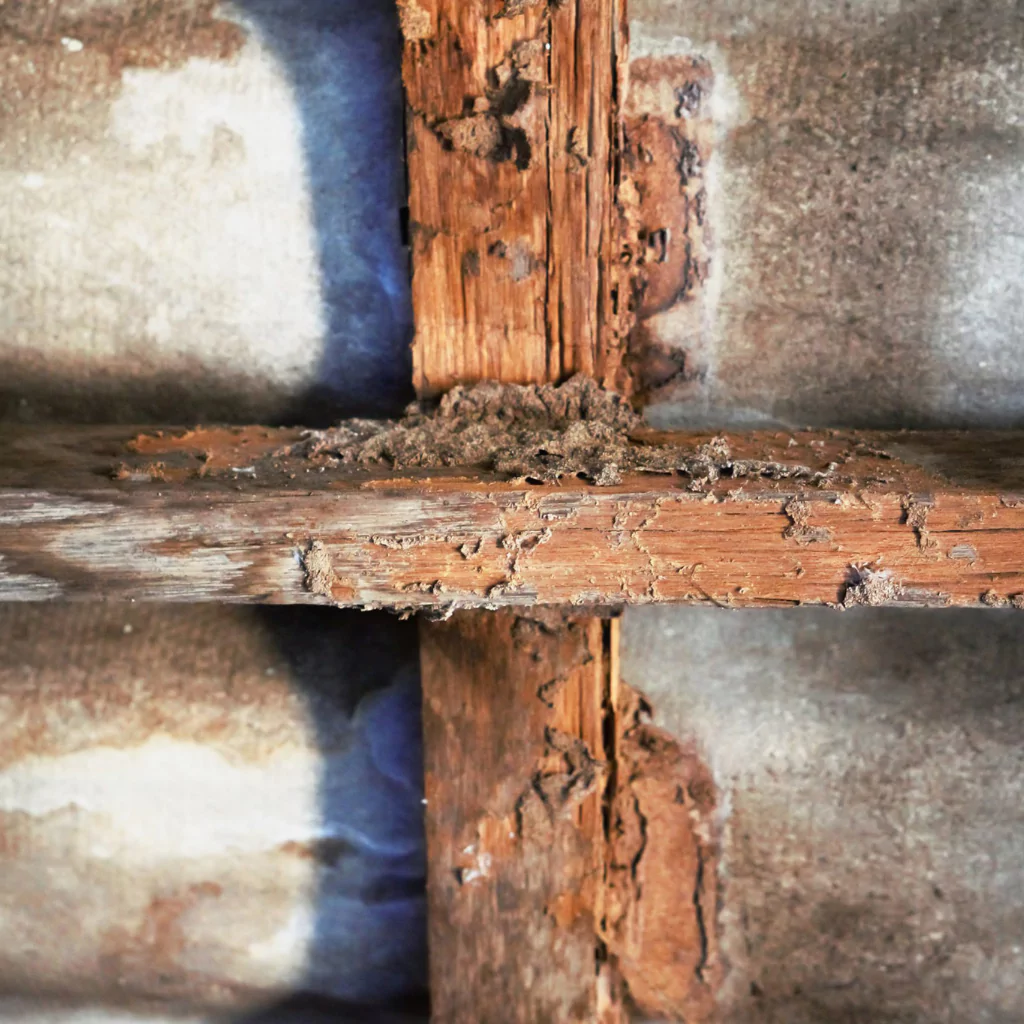
Dry rot early signs
Similarly to mould, dry rot proliferates in areas of high moisture and feeds on a cellulose source so it shares a few of the same warning signs as mould. These may include:
Musty Odour: Dry rot often emits a damp, musty smell similar to that of a damp basement or cellar.
Discolouration: Look for patches of discoloured wood or masonry, which may appear darker or lighter than the surrounding area.
Cracked or Shrunken Wood: Dry rot causes wood to shrink, crack, or become brittle. Check for signs of wood that appears sunken or distorted.
Fungal Growth: In its early stages, dry rot may produce white or greyish strands resembling spider webs, known as hyphae. This may eventually develop into a cotton-like or fluffy mass, particularly in areas with high humidity.
Fungal Spores: Fine, dust-like particles (spores) may be visible on surfaces affected by dry rot, especially in poorly ventilated areas.
Softened Wood: Gently press or tap on suspected areas of wood infestation. If the wood feels soft, spongy, or crumbles easily, it may indicate dry rot.
Creaking or Hollow Sound: Dry rot can cause wood to lose its structural integrity, resulting in a hollow or creaking sound when tapped or walked upon.
Peeling Paint or Wallpaper: Dry rot can cause paint or wallpaper to peel away from affected surfaces as the underlying wood deteriorates.
Increased Humidity: Dry rot thrives in damp environments, so an increase in humidity levels within your property may indicate a conducive environment for its growth.
Visible Damage to Timber Joints or Structural Elements: Inspect areas where timber elements join together, such as floor joists, roof rafters, or window frames, for signs of decay or damage caused by dry rot.
Life cycle of dry rot
What does dry rot look like?
Spores
Hyphae
Mycelium
Fruiting Body
Is dry rot dangerous?
Whilst dry rot is perhaps the most serious form of fungal decay, generating moisture from digesting the structural timber surfaces it grows on and causing extensive structural damage, it is not considered a health hazard.
The spores do not produce any toxic chemicals or mVOC’s. If you already suffer from a severe respiratory condition, you may need to seek the advice of a qualified health professional but dry rot on its own will not typically cause any harm.
Dry Rot Treatment
WHITE KNIGHT has been treating DRY ROT infestations for 4 decades with great success. We adopt a very robust action plan that includes the removal and disposal of infected timber and other porous materials.
We use a powerful but eco-friendly biocide to kill the mycelium and then physically remove all traces of the fungus from brickwork / render / plaster / concrete and other non-porous materials.
We provide a decontamination certificate which includes a 12 month guarantee for your ‘peace of mind’.
